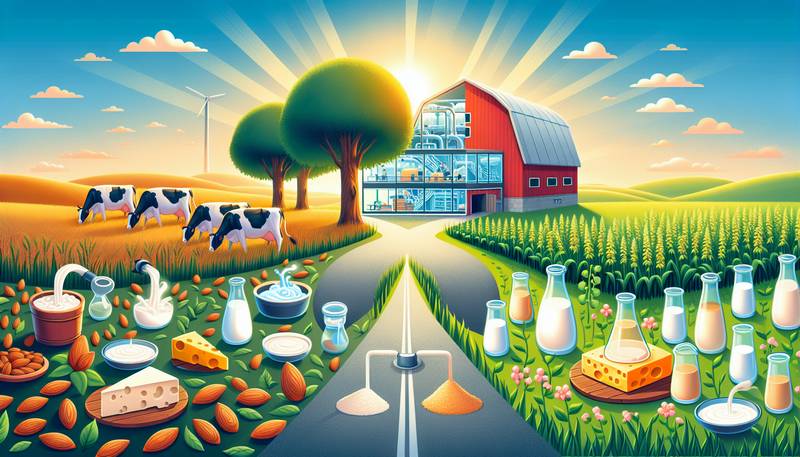Animal-Free Dairy Innovations: Analyzing the Latest Trends and Products

The Rise of the Moo-Free MovementSomewhere between the cow's morning moo and the afternoon cheese craving, a new wave of dairy innovation has emerged. Forget the traditional methods of milking, because a revolution is happening right under our noses—well, figuratively speaking. Lab-grown and plant-based alternatives to dairy are surfacing faster than you can say 'let’s go on a vegan diet!' As society leans toward sustainable choices, animal-free dairy products are gaining traction in the grocery aisles. But why are people trading in their cow's milk for almond juice? Spoiler alert: it has something to do with the quest for health, ethical concerns, and the planet’s well-being. Who knew that dairy could be a matter of life or nachos?What Are Animal-Free Dairy Products?At the core of this dairy renaissance are innovative products designed to mimic the taste and texture of traditional dairy without involving any animals. Think of lab-grown cheese that doesn't require a single cow (or goat, sheep, or llama). Yes, llama! Some common types of animal-free dairy options include:- Plant-based milk (almond, oat, and soy)
- Vegan cheese made from nuts, soy, or nutritional yeast
- Lab-grown yogurt featuring gut-healthy probiotics
- Butter alternatives derived from oils and nuts
These alternatives are making waves, not just for their ethical attributes but also for their versatility in cooking. You can now whip up a cheesy pasta that is entirely plant-based—so why not impress your friends with a little vegan magic? Just don’t let them know it didn’t come from a cow. Science to the Rescue!Innovation isn’t just a buzzword; it's the fuel driving the animal-free dairy engine. Scientists and food technologists are working tirelessly in labs, blending together the magic of food technology and the goodness of nature. Imagine a scientist in a lab coat mixing up ingredients like some kind of culinary wizard. If only they had a wand to make things easier!Companies are experimenting with fermentation processes and molecular gastronomy to create dairy-like products that have all the flavor—and none of the moo. Enzymes and proteins are being tweaked here and there, like a DJ remixing your favorite song. The results? Items that look, taste, and often feel like traditional dairy while being entirely animal-friendly. That’s right, your next pizza night may just feature a cheese that was born in a lab rather than a barn.Taste Bud Testers Unite!Consumers are the ultimate judges in this dairy duel. And they aren’t shy about voicing their opinions. Some have embraced these alternatives with open arms, while others act as if they’ve just bitten into a block of cardboard. The taste test is no joke—some of these products have received raving reviews, while others have, let’s say, a long way to go before any cows get worried.Market trends show that plant-based products are soaring in popularity. In fact, sales of non-dairy milk have skyrocketed, proving that consumers are not just curious; they’re hungry for change. It’s a clear sign that taste buds can adapt, especially when they realize they’re saving the planet one scoop of ice cream at a time. The Impact on Health and the EnvironmentThe implications of animal-free dairy go beyond just what’s on your dinner plate. These products can often be lower in calories and saturated fat compared to their dairy counterparts, appealing to health-conscious individuals. Plus, reducing dairy consumption can lead to less greenhouse gas emissions and lower water usage. It’s a win-win situation! However, it’s essential to remember that not all dairy alternatives are created equal. Some might pack a nutrition punch, while others could closely resemble a sugar-laden milkshake. It’s like playing roulette with your health—bet wisely! Cheesing OutSo what’s the takeaway from this dairy-free divide? The world of food is evolving, and the options for animal-free dairy products are not just a passing fad. They signal a shift in consumer preferences driven by ethical, health, and environmental considerations. As innovations continue, expect to see even more delicious alternatives popping up faster than you can say 'curds and whey. Who knows? In the future, we might be able to enjoy cheesy goodness without ever needing a cow. Now that's something worth milking!
|
|







